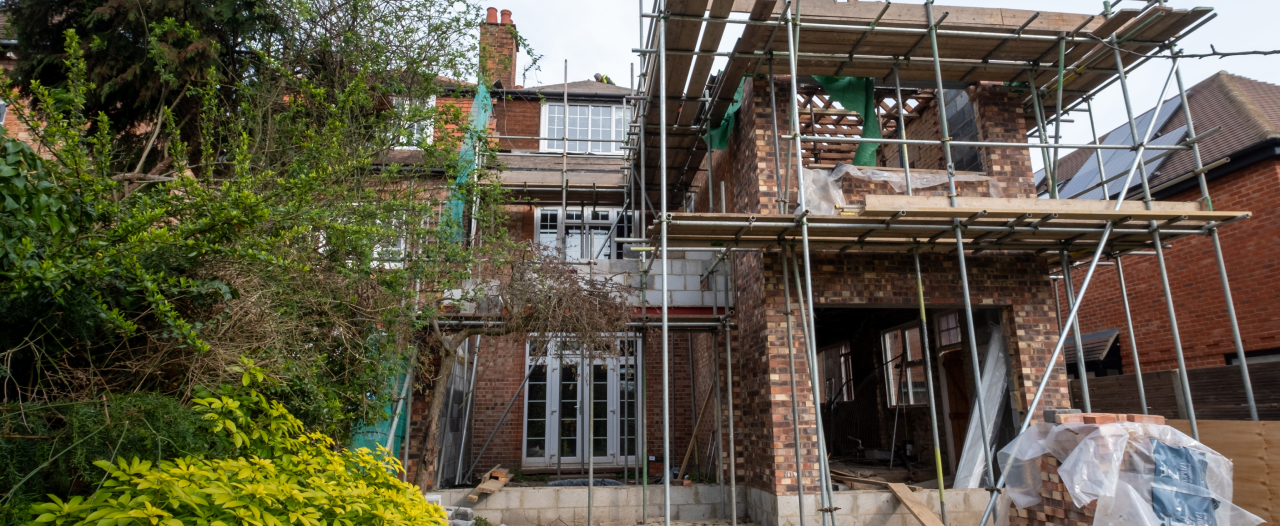
Many homeowners reach a point where their home feels too small. Families grow and work patterns change, and people start to wonder if it would be better to move or to extend. Extending a house can often feel like a perfect solution. It allows you to remain in familiar surroundings, avoid the stress of moving and create a space that suits your needs.
However, a house extension is not a simple decision. It requires significant financial commitment and planning permission and can lead to months of disruption. Before you start dreaming of that extra bedroom, it is worth asking whether it is worth the trouble.
The Appeal of Extending Your Home
The main reason people choose to extend their property is the need for more space. Moving to a larger house can be expensive and involves selling your existing home. By extending, you avoid some expenses, such as stamp duty and conveyancing costs, and invest that money in your current property instead. This can make even more financial sense if house prices in your area are high.
Another attraction of extending is control. When you buy a new house, you sometimes must compromise on location and layout. With an extension, you can design the space to suit your needs and preferences. For example, you may want an open-plan kitchen, a home office or a larger living area. An extension allows you to tailor your property to your needs.
Costs Involved in a House Extension
The cost of a house extension varies depending on size and design. A simple single-storey extension can cost tens of thousands of pounds, while a double-storey project or complex design can reach over a hundred thousand pounds or more. Homeowners must also consider the cost of architects, structural engineers and planning applications.
It is not only the building work that makes up the cost. Extending often requires a new heating system, rewiring, re-flooring, and redecoration. Many people underestimate further costs that come after the main structure is complete. These might include kitchen fittings, bathrooms and furniture. When budgeting, it is also essential to allocate extra funds for unexpected expenses that may arise.
Factors That Affect Cost
Understanding house extension costs in more detail can help you determine whether the investment is worthwhile. The price per square metre is often used to estimate overall costs. The average figure can range from approximately £1,500 per square metre in some areas to more than £3,000 per square metre in London and the Southeast. This means that even a modest extension can quickly add up to a significant sum.
The type of extension being considered also affects the cost. A basic single-storey rear extension that adds a dining space may be relatively affordable. By contrast, a double-storey extension that includes a kitchen and an extra bedroom will be more expensive. Loft conversions and garage conversions are typically more affordable options, although they may necessitate structural work and will need to comply with building regulations. The finishes you choose can also make a difference. For example, a simple design with standard materials will be cheaper than high-end fittings, bespoke windows and underfloor heating.
Another factor is location. Building costs in London, for example, are often higher than in northern towns. Labour rates vary across the country and so do the costs of materials. This means that two homeowners planning a similar extension can face quite different price tags depending on where they live.
Professional fees also need to be taken into consideration. Architects, structural engineers, surveyors and planning consultants all charge for their services. Legal fees and local authority application charges must also be included. These costs may not be as visible as bricks and mortar, but they are unavoidable if you want a safe and compliant build. For this reason, it is worth considering adding at least ten to fifteen per cent to your budget to cover such additional expenses and any unforeseen issues.
Impact on Property Value
One of the main reasons homeowners extend is the potential to increase property value. An extra bedroom or a larger kitchen can make a house more appealing to buyers. In many cases, extensions can add more value than the cost of the work itself.
This, however, is not always the case. The impact on value depends on the property's location and the type of extension. In areas where space is at a premium, such as London, adding extra rooms can increase value significantly. In less expensive areas, the increase in value may not necessarily even cover the cost of the extension. It is always worth speaking to local estate agents before starting. They can give you an idea as to how much value the extension is likely to add in your area.
Types of House Extension
There are many different types of house extension. Each has its own advantages, challenges and costs. The choice depends on the type of property you own, the available space and your long-term objectives. Some common options are:
- Rear Extensions
These extend the property out into the garden at the back of the house. They are popular for creating open-plan kitchens or dining rooms and are one of the most straightforward ways to add space. The main trade-off is the reduction in garden size.
- Side Extensions
These can utilise narrow strips of land along the side of the property. They are excellent for creating wider kitchens and adding more light. Although smaller in scale, they can transform the feel of a home.
- Wrap-Around Extensions
A combination of rear and side extensions, this design creates an L-shaped space that wraps around the property. It is ideal for large, open-plan living areas but tends to be more expensive and complex to design.
- Double-Storey Extensions
These additions typically add two floors to the property, usually located at the rear or side. They are more expensive but can provide both a larger living area and additional bedrooms. They are particularly valuable for growing families.
- Over Structure Extensions
Built on top of existing structures such as garages or single-storey parts of the house. These extensions are a smart way to add an extra bedroom or office. They require careful structural work to ensure the existing foundation can take the extra weight.
- Basement or Cellar Conversions
Converting unused underground space into living areas is a popular trend in high-value urban areas. Basements can be converted into gyms, offices or extra bedrooms. However, the work is often expensive and disruptive due to excavation and waterproofing.
- Loft Conversions
Loft conversions utilise unused attic space. They are one of the most cost-effective ways to add a bedroom or a home office. Roof height and structure play an important role in determining whether a loft can be converted.
- Conservatories and Orangeries
These are glass-heavy structures that extend into the garden. Conservatories are usually cheaper but less efficient in winter. Orangeries are more substantial, featuring brick or stone bases and improved insulation, making them more usable in the winter.
- Garage Conversions
Converting an attached garage is a relatively low-cost option. The space can be turned into a living room, bedroom or home office. It avoids many planning issues but may reduce parking or storage space.
Disruption During Construction
While the result may be attractive, the process of building an extension can be disruptive. Construction often lasts several months, during which time you may experience noise, dust and limited access to certain areas of your home. For families with young children or people working from home, this disruption can be even more challenging.
Living on site during building work can be stressful. In some cases, homeowners choose to rent temporary accommodation until the project is complete. This adds to the cost but can make the experience more manageable. It is important to prepare for the disruption and decide whether you are ready to live through the process.
Financing a House Extension
Paying for an extension often requires taking out a loan. Some homeowners use savings, but many rely on loans. Lenders will want to know the project's cost and how it affects the property's value.
Remortgaging to release equity can be a viable option, but it may result in higher monthly payments. Personal loans may be easier to arrange but can carry higher interest rates. Careful financial planning is essential. Borrowing too much or underestimating costs can leave you and your project in difficulty.
Conclusion
Extending your home can be a smart investment, but it may not be the right choice for everyone. For many homeowners, it provides the extra space they need without the stress of moving. It can also add significant value, especially in high-demand areas. However, the costs, disruption and planning requirements should not be underestimated. Before starting, it is important to assess your budget and your long-term plans carefully. Speaking to estate agents, architects and financial advisors can help you make an informed decision. In the end, a house extension is only worth the investment if it enhances both your lifestyle and your property value.
FAQs
Q. How much value will an extension add to my property?
A. This depends on your location and the type of extension. In high-value areas, an extension often adds more than its cost. In other regions, the increase may be smaller or the cost may exceed the increase in value.
Q. What is the least expensive type of extension?
A. Loft conversions are often less expensive than other extensions and often do not require planning permission. However, they require suitable headroom and a strong roof.
Q. Do professional fees add a lot to the cost?
A. Yes, they can. Architects, planning consultants and structural engineers all come at a high cost. While some homeowners may attempt to avoid these fees, professional guidance is essential to avoid potentially expensive mistakes and ensure compliance with regulations.
Q. Will high-end finishes increase the total cost significantly?
A. Yes. The choice of materials and finishes can make a big difference. Standard kitchens and bathrooms keep costs manageable, but adding premium fixtures and materials to a project can increase the cost significantly. It is important to balance style with budget.
Q. How can I keep extension costs under control?
A. The best approach is to set a realistic budget with at least ten to fifteen per cent extra for unexpected expenses. Getting multiple quotes, choosing standard finishes and planning carefully can help.










